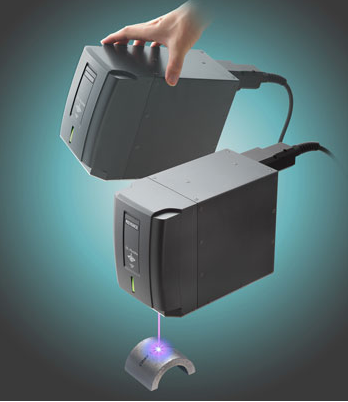
Keyence recently released its new 3-axis MD-F3000 Fiber Laser Marker, representing a significant advancement in the evolution of direct part marking.
The MD-F delivers a full 30 watts of power directly on the target surface ensuring that dense, hard metals can be permanently marked and etched in a matter of milliseconds. The ultra-small head offers the smallest footprint in its class allowing for fast, easy installation in tight spaces. The MD-F’s head has a fanless design and is completely sealed from dirt and dust, making it perfect for metal processing and other harsh industrial environments. This provides greater stability, reduced maintenance, increased productivity and more mounting possibilities than ever before. Together with newly developed software, the MD-F offers the ideal combination of marking quality, speed, and ease of operation to meet the stringent marking requirements of today’s industries.
The MD-F3000 Series also incorporates Keyence's unique, proven 3-axis beam control system that debuted in the ML-Z9500 and MD-V9900 Series markers. The 3-axis design ensures that the MD-F provides high quality, distortion-free marking across the full 300mm x 300mm area without the need for costly mechanisms to index the target or marking head.
Combined with other standard laser marker features offered by Keyence, such as an internal power monitor, sample marking function, encoder inputs, date-time functionality, touch panel interface and storage of up to 2000 programs, the MD-F offers the optimum solution for any metal processing/marking application.
Keyence's Marking Builder-2 Software has also been upgraded with a new Quality Function which significantly reduces setup time. The Quality Function uniquely blends all of the advanced parameters entailed with creating high quality marks at high-speed into one set of options for a user to choose from. This makes it quick and easy to find the right settings to create the required mark in the desired time. Coupled with the 30W power of the MD-F, the marking time for high quality 1D or 2D codes is greatly reduced. The result is the ability to mark easy-to-read codes in-line, well within the production cycle time.
|